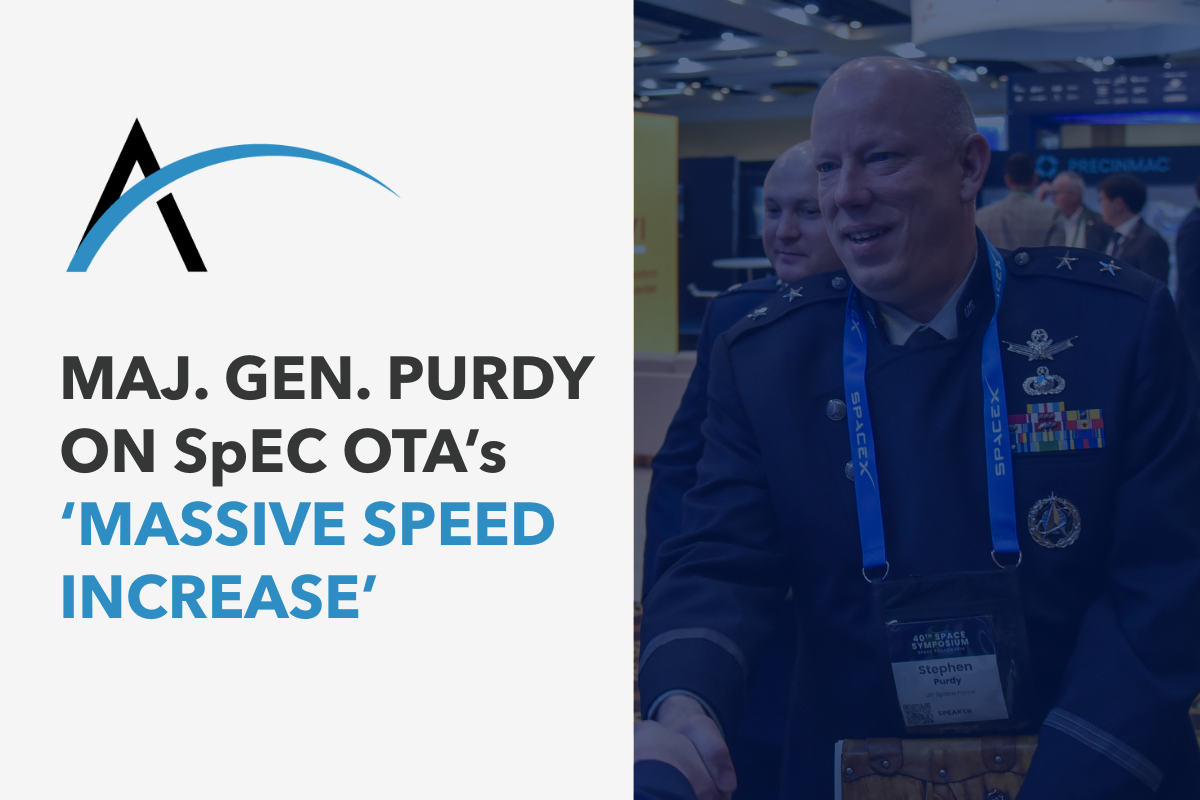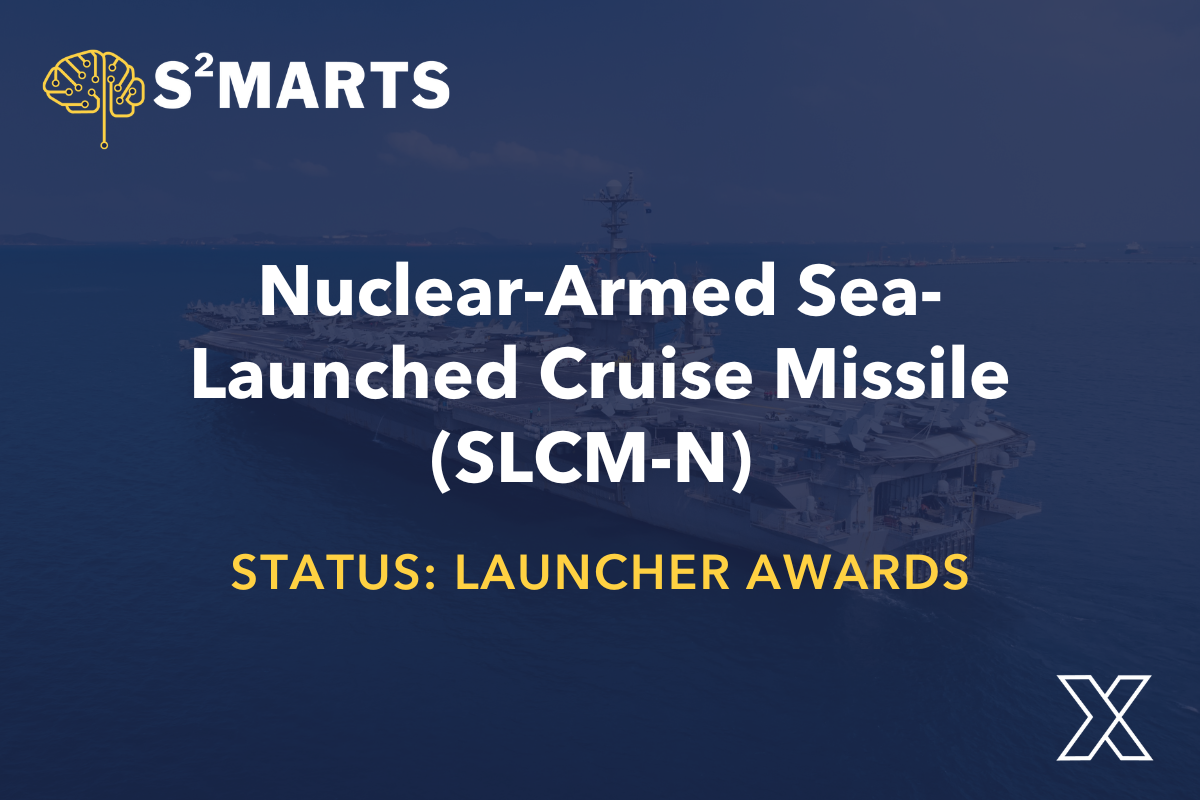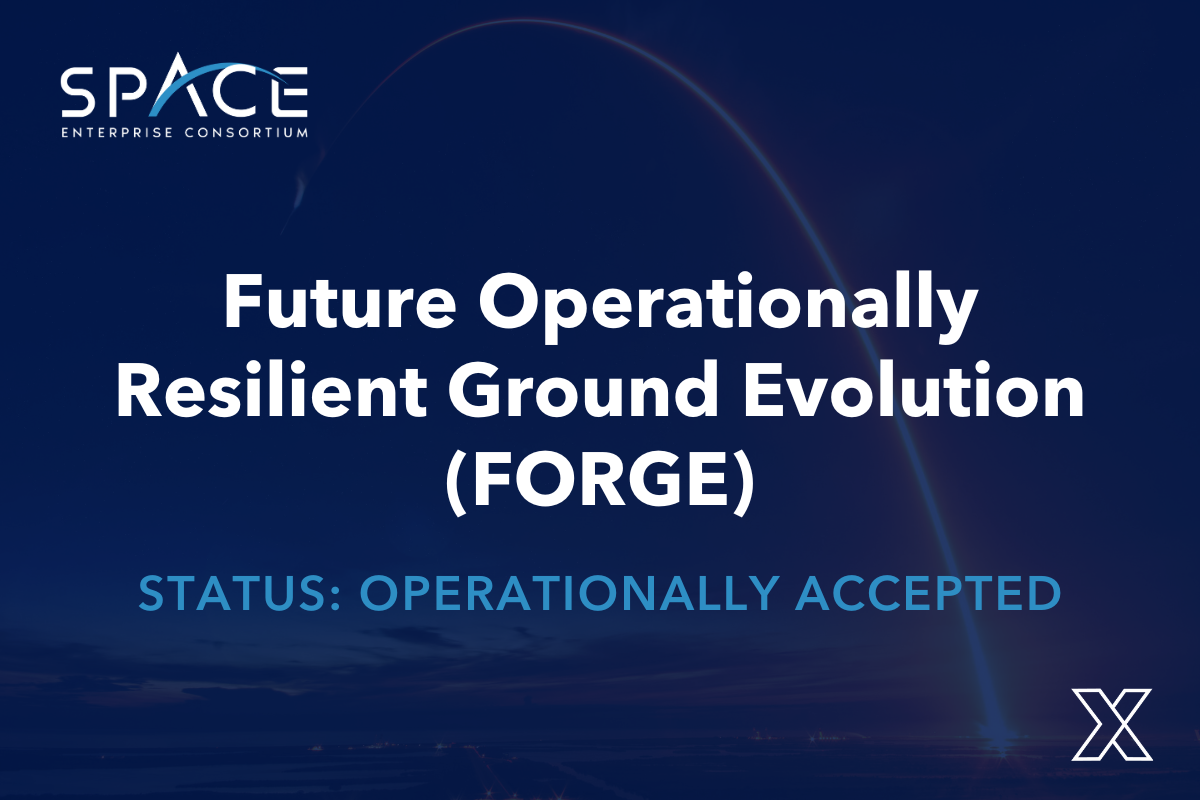From Years to Weeks: Maj Gen Purdy on SpEC OTA’s ‘Massive Speed Increase’
August 26, 2025

For years, defense acquisition was stuck in the slow lane as outdated contracting methods stretched projects into years, costing time, money, and momentum. Meanwhile, competitors overseas pushed ahead. Today, that reality has changed. The Space Enterprise Consortium (SpEC) Other Transaction Authority (OTA) has redefined how the DoD acquires space capabilities. What once took years can now be executed in weeks or months, marking a decisive shift in the pace of defense acquisition.
Space Force Contracting Moves Faster
Compared with the Federal Acquisition Regulation (FAR) process, which often stretches 18–24 months, the SpEC OTA dramatically reduces administrative overhead, eliminates bureaucratic barriers, and opens the door to more innovative participants.
At the 2025 Air & Space Summit hosted by the Potomac Officers Club Maj. Gen. Stephen Purdy, Acting Assistant Secretary of the Air Force (Space Acquisition and Integration), described SpEC’s timelines as a “massive speed increase.”
“SpEC’s acquisition timeline is a massive speed increase.” Maj. Gen. Purdy
Opening the Door to Non-traditional Players
SpEC doesn’t just move faster, it opens new doors by requiring participation from non-traditional players like startups and dual-use tech firms. This mandate, a foundational element of OTA contracts, ensures the government has access to cutting-edge ideas beyond the traditional defense industrial base.
In his speech, Maj. Gen. Purdy highlighted that 87% of SpEC awards have gone to non-traditional vendors, with contract execution timelines as short as 58 days. The collaboration from both traditional and non-traditional vendors broadens the defense industrial base and shortens innovation cycles, helping the Space Force adapt quickly in a contested space environment.
“It’s not often in the commercial marketplace that there are lives on the line when you enter a project… The government needs to have options and a broader picture of what’s available,” said Tim Greeff, President & Founder of NSTXL.
Case Study: Deep Space Advanced Radar Capability (DARC)
One of SpEC’s recent successes is the Deep Space Advanced Radar Capability (DARC) program. This collaboration between the U.S., U.K., and Australia tracks small objects in geosynchronous orbit, helping safeguard satellite services critical to military and civilian applications.
Just one year after signing a ground-breaking trilateral agreement, the DARC partnership is completing facilities construction at the first of three sites that will host a global network of advanced ground-based sensors.
DARC illustrates the power of dual-use technologies, leveraging commercial R&D for military advantage while also fueling private-sector growth. With contracting flexibility provided by SpEC, programs like DARC can rapidly integrate commercial solutions into national security systems.
Why Speed Matters
Adversaries continue to develop counterspace capabilities at alarming speed. U.S. leaders like Maj. Gen. Purdy emphasize that rapid acquisition is not optional but essential to protect space assets and ensure technological superiority. That’s where OTAs, specifically consortium-managed ones, shine.
While OTAs can function independently, their impact is amplified when managed by a consortium. NSTXL, as the consortium manager of the SpEC OTA, provides full life-cycle support, from market research to performer outreach and milestone tracking. NSTXL also supports and advises on contracts as well as provides client success services. This model ensures both speed and accountability, enabling SpEC to deliver on its promise.
As space becomes increasingly contested, programs like SpEC will determine the pace of U.S. innovation. By connecting the DoD with commercial innovators, SpEC is building an agile, resilient industrial base capable of outpacing global threats.
Want to get involved? Learn more about the Space Enterprise Consortium and explore opportunities for partnering with NSTXL.
About SpEC
The Space Enterprise Consortium (SpEC) was created in 2017 through the Air Force Space Systems Command to bridge the gap between military buyers and commercial space startups and small businesses through OTAs. Companies interested in joining the Space Enterprise Consortium can find more information about the organization, including how to join at https://www.space-enterprise.org.





